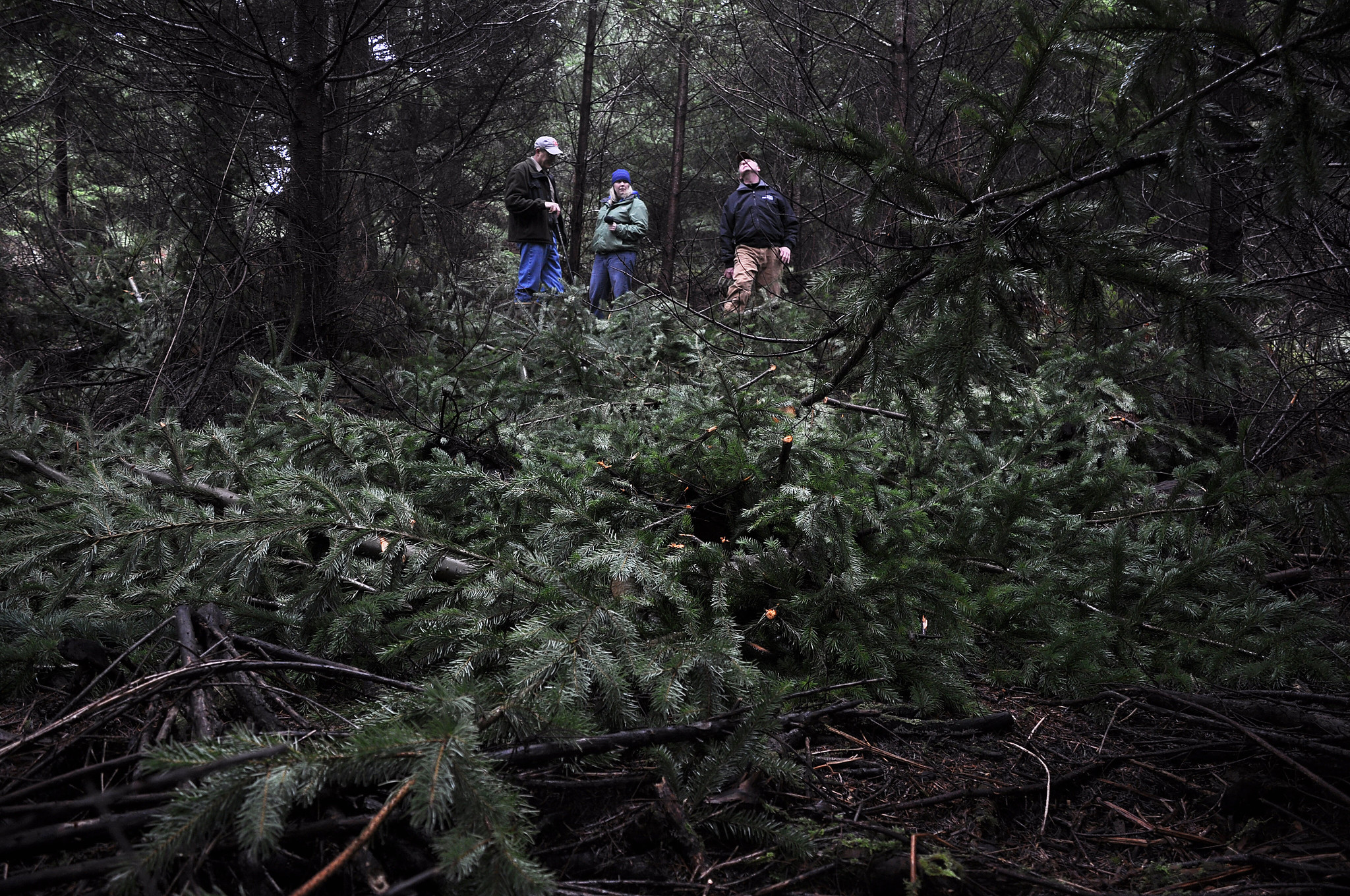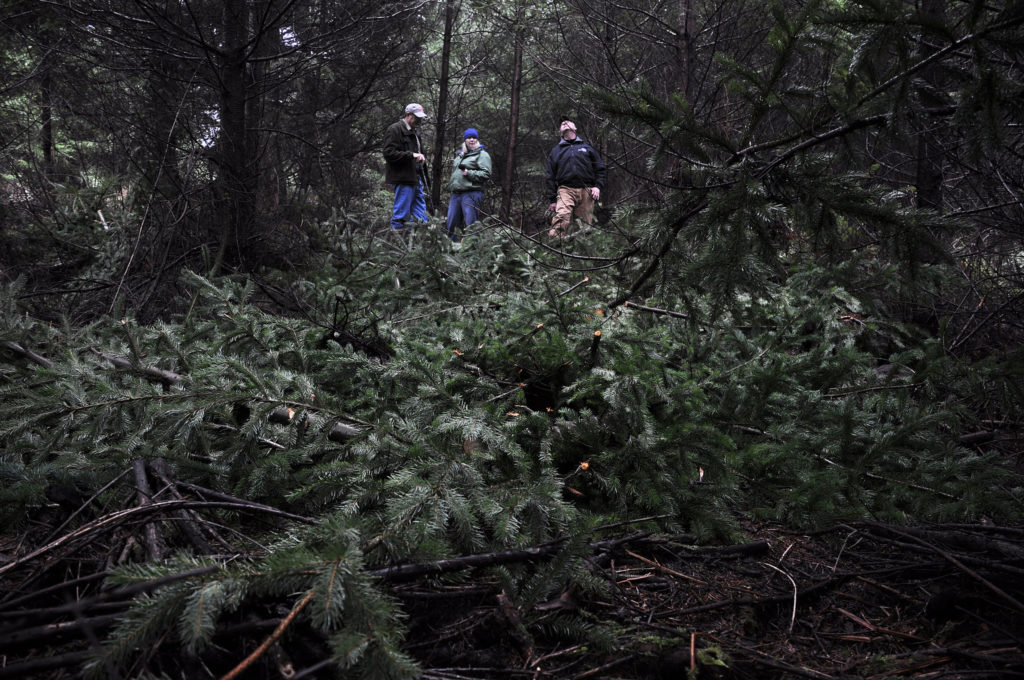Funding Fuel Reduction and Forest Health Projects

Depending on the state of your forest, fuel reduction and forest slash treatments may be ways you can improve your forest’s health and fire resilience. We’ve identified cost-share programs, funding, and other resources, as well as information on how to do-it-yourself.
Forest slash treatment is becoming a necessity in many forests due to historic fire suppression and the trees and vegetation that have grown since (more dense, often comprised of more species less resistant to fire). Fire suppression has led to many overstocked forests that become serious fire hazards during the increasingly dry summer season. Methods to reduce fire fuels range from removal of problematic understory vegetation by hand, thinning your forest, or even prescribed fire. Applying slash treatments as a means to reduce forest fuel can be very successful.
Applying slash treatments can…
- Reduce hazardous forest fuels that can cause devastating forest fires
- Reduce the risk of disease and harmful fuels
- Protect fire-resilient species of tree
- Preserve air-quality by reducing fire risk
- Improve the soil and organic matter
- Encourage natural regeneration and healthy understory growth
- Enhance aesthetics
- and more!
The Environmental Quality Incentives Program (EQIP) provides landowners with financial and technical support in order to implement conservation practices that will strengthen the ecological resilience and diversity of the forest – fortunately, applying slash treatments (EQIP code 384) is merely one of the ways in which this objective can be accomplished. If you are interested in applying slash treatments to your forest and would like to apply to obtain funding through EQIP, contact your local NRCS office to discuss the projects you have in mind. NRCS has also provided a handy quick guide for basic information on slash treatment options, eligibility and more. For more information about EQIP, check out our EQIP page. We realize EQIP may not be the right fit for everyone’s needs, so we’ve included additional resources.

Programs in Oregon
Grants/Cost-share
- Fuels reduction/Defensible space – Landowners seeking financial assistance for fuels reduction and creating defensible space around their homesites may be eligible for a rebate of $400 per acre through the Oregon Department of Forestry or their local rural fire district. Generally, funds are available for the 1-acre homesite; in some cases, funds may be provided for non-commercial thinning and slash reduction beyond the 1-acre homesite. Those interested should contact the Department of Forestry prior to beginning work to arrange for a site visit.
- Slash treatment/pre-commercial thinning grants – Through a grant to the Oregon Department of Forestry, cost share assistance is also available for pre-commercial thinning and slash treatment designed to mitigate insect and disease problems. There is a five-acre minimum project size and the cost share rate is 50%/$230 per acre. Contact Lee at 664-3328 for more information.
- Grants Pass Grant Assistance Program – There is a grant assistance program available to homeowners in Grants Pass to help reduce hazardous fire fuel material on their property including fire prone brush, trees, and landscaping. The program offers a reimbursement for work completed by the homeowner or the contractor of their choice. For more information, contact Bob Schumacher at 541-450-6205.
- Local and state-wide Firewise Grants/Assistance – Contact Oregon’s Firewise Liaison for more information:
Jenna Trentadue, Natl Fire Plan Coordinator
Oregon Dept of Forestry
Office: +1 503 945-7210
jenna.a.trentadue@oregon.gov
Do-It-Yourself
- General information on slash treatments and their benefits
- More information on fuel reduction practices
- Forest Slash Burning Guidelines – These are good guidelines that are used by forest landowners, land managers, and fire department personnel in planning and conducting safe and effective forest slash burning in woodland situations. Guidelines are for Colorado but general practices are still relevant to the PNW.
- OSU Fuels Reduction – An excellent article by OSU that explains all of the different methods of fuel reduction and how to do them.
Programs in Washington
Grants/Cost-share
- Cost-share application through DNR and US Forest Service for Eastern Washington forest landowners -Landowners interested in having a forester assess their forest or applying for cost-share practices such as thinning, pruning, or slash disposal can have up to 50% of total costs covered. Another version of the application here. Deadline is September 30, 2015.
- King Conservation District cost-share funding – The District’s Landowner Incentive Program (LIP) provides landowners with cost-share assistance to support implementation of conservation practices on private property. Landowner expenses associated with pre-approved conservation practices are matched with KCD cost-share funding at a ratio of 50% to 90% of the total cost of projects – LIP funds 75% of forest management practices.
- Funding for Eastern Washington landowners – Joint Chief’s Landscape Restoration Partnership provides financial and technical assistance to Eastern Washington forest landowners. WA DNR will be offering thinning, pruning, treatment of forest slash and forest management plans. The FY15 deadline was May 21, 2015 and funding availability for next year is unclear. If you are interested in possible funding for FY16, contact NRCS at (509) 685-0858 extension 115 or DNR at (509) 684-7474.
- Washington’s Firewise program – Firewise is a nation-wide organization that provides cost-share incentives for fire prevention, holds community workshops and trainings, and develops county-wide wildfire protection plans. The Firewise grants are administered to individual conservation districts who then choose landowners. Learn more about the Firewise Incentive Program in WA here, or contact your local conservation district to learn more.
- State-wide Firewise Grants/Assistance – There may be state-wide funding opportunities available as well. Contact Washington’s Firewise Liaison for more information:
Sarah Foster, Program Manager, Urban & Community Forestry Program
Phone: (360) 902-1704
sarah.foster@dnr.wa.gov
Do-It-Yourself
- General information on slash treatments and their benefits
- WA DNR Forest Practices Guide – Here’s where to find help if you’re interested in harvesting timber, building or repairing forest roads or culverts, thinning your forest, or want to know about other forest practices. You can apply for a forest practices permit and find forest practices forms, fees and technical requirements to follow when working in the woods here.
- More information on fuel reduction practices
- Forest Slash Burning Guidelines – These are good guidelines that are used by forest landowners, land managers, and fire department personnel in planning and conducting safe and effective forest slash burning in woodland situations. Guidelines are for Colorado but general practices are still relevant to the PNW.
- OSU Fuels Reduction – Great article by OSU that explains all of the different methods of fuel reduction and how to do them.
- WSU Puget Sound Extension Forestry Resources – Provides educational resources to forest owners on a variety of topics ranging from taxes to native plants and shrubs. Checking out the fire resource might be especially helpful.

Leave a Reply